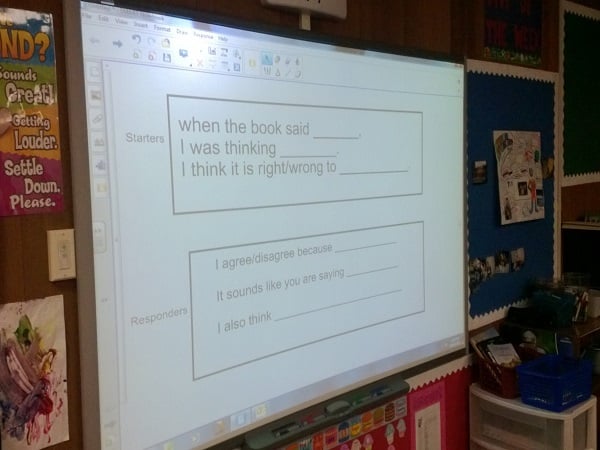Making Inferences: 6 Essential Strategies

How do you help students make inferences while reading? Learn six essential strategies for inference generation that are sure to increase comprehension for even your most struggling readers!

Reading comprehension is a process of construction where readers link ideas within and between sentences and connect ideas between paragraphs. Reading is also an integration process where readers use prior knowledge to fill in what the author has omitted. Both of these tasks are inferences. Knowledge and inferences are the forces that drive reading comprehension. How do you promote inferential thinking in our students? Consider the following vignette:
Mary carefully looked at her menu trying to find the cheapest entree while John gazed lovingly in her eyes. He was relieved when she ordered the spaghetti.
You just made a variety of inferences, some automatic and others deliberate. Your mind works automatically to retrieve the information that he is John and she is Mary. (Only a few students will have difficulty with these inferences.) Similarly the word menu retrieves the setting restaurant. You automatically generate from long-term memory that spaghetti is inexpensive.
Reading the vignette you generated three inferences that produce new insights.
- You inferred the cause of John’s gaze, his infatuation with Mary.
- With a bit more effort you inferred that Mary’s close study of the menu is caused by her financial circumstances or her considerateness of John’s wallet.
- Finally, you put it all together to infer their state; they are on a date.
With this brief background let’s consider six essential strategies for teaching inference generation. Utilizing these strategies will produce remarkable changes in their reading comprehension.

1. Build Knowledge.
Build your students’ inferential thinking by developing prior knowledge. All types of knowledge are necessary for comprehension: knowledge of concepts and ideas, an understanding of what motivates people, a consideration of character feelings and traits, an appreciation of our cultures’ dominant themes. When you select texts to read aloud or the texts that students read they should be organized into topical or thematic units. Each text should build on what they have previously read. The knowledge that students build enables them to make inferences.
2. Study Genre.
Teach your students about genre, but make it an in-depth study. From the study of fiction a reader learns that characters have problems and goals. Characters respond to problems, they have feelings, and they exhibit traits. To understand fiction you must go beyond the simplicity of the story map. An understanding of genre, particularly the text structures of a genre, helps students make inferences and generate new understanding.
3. Model Your Thinking.
When reading aloud or during a discussion, model the process of inferential thinking. A simple chart can make this thinking more explicit. Pose each question and write in what you are thinking. Next, give the students a chance to try out the same process. Questions to ask: What did the author fail to write? What clues did the author leave? What do I know? What inference can I make?
4. Teach Specific Inferences.
Highlight specific inferences and make each a focus of instruction. First, you might study character feelings and traits and the many words we use to label these. It is difficult to infer character traits without words like gullible, resourceful, or carefree at your disposal. Next, infer the theme. Once you have explored the inferences that can be made with fiction, move on to studying the inferences necessary with informational text such as cause and effect and determining main idea.
5. Set Important Purposes for Reading.
Students can read for shallow or deep purposes. To discover what happens next is a shallow purpose and is often what students think about when we ask them to predict. Inquiring about how or if a character might change or how he will resolve his predicament will push the reader to think more deeply about a text. Setting a deep purpose changes the reader’s standard of coherence or what he will accept as adequate comprehension. If the reader’s standards are superficial, like determining what happens next, then there is nothing to push him or her to think deeply. The purpose for which we read effects the standards of coherence and that in turn drives the type and depth of our inferences.
6. Plan A Heavy Diet of Inferential Questions.
When you engage your students in text discussion make sure that 70 percent of your questions are inferential. This sets an expectation for how students read. If they expect a diet of inferential questions they will read more deeply and engage in inferential thinking. If you have taught your students a system like 'Question-Answer-Relationships' make most of your questions 'Think and Search' and 'Author And Me'.
There is no simple solution to improving inferential comprehension. Making inferences is not one process; it is complex and diverse and you are fundamentally trying to change how students think while they read. Making inferences cannot be taught in a week or two so you can move on to the next strategy, rather making inferences is something to model and practice in every text. Use the 6 essential inference strategies to create depth of thinking about the ideas in the text and those implied by the author.

Are you looking for a reading program to increase motivation and achievement?
We are confident the Read Side by Side Reading Program will be the right fit for your next curriculum adoption! To learn more about the program and request a sample kit, connect with one of our advisors!

Written by Peter Dewitz, Ph. D.
Director of Research



